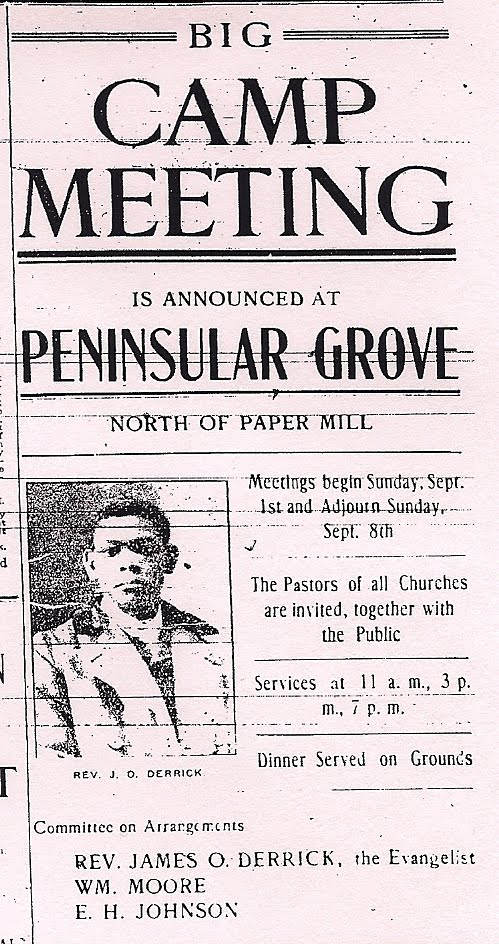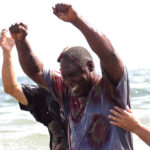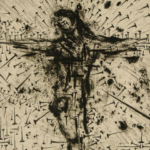(Also see Part 1, Part 2, Part 4, and Part 5)
Falsely accused, John Anderton is a fugitive trying to figure out the truth behind a crime he hasn’t even committed yet. In 2054, Washington, D.C. has been murder free for six years because the controversial “PreCrime Police Force”, using three mutant-humans who see the future, catches suspects before they commit the crime (Minority Report, 2002).
Anderton is searching for the “minority report”, a “memory of the future” that is discarded when only two of the three pre-cognitive humans agree about the future crime. Hoping this information will prove his innocence, Anderton kidnaps Agatha (the only female of the three precogs and usually the one offering the “minority report”) and hacks her brain for the lost data. Will this information ultimately vindicate him, and is he destined to live out the future? And is there something going on even bigger, and farther back, that Anderton knows little about?
In the same manner we must look for the “minority report” within our evangelical memory, hoping to escape a destiny others have already assigned for us. In the previous two posts (part one and part two) we began debunking the “majority report” (or “implanted memories”). Now we must move even farther back to recover our true evangelical memory.
Classical Evangelicalism
It is difficult to know where and when to trace the lineage of evangelicalism, but somewhere within 17th Century Continental Pietism and British Puritanism seems best.[1] But with historian Douglas Sweeney, classical evangelicalism is best describes as Protestantism with a “revivalist twist.”[2] And this “revivalist twist” gives evangelicalism its radicalism and reformist orientation. So let’s look at these three R’s (revival, radical, reform).
John Wesley (1703-1791) is famous for his stirring conversion (when his heart was “strangely warmed”) at the Aldersgate Street meeting of the Moravians (http://en.wikipedia.org/wiki/Moravian_Church ). After this conversion he coaxed famed preacher George Whitefield (1714-1770) to minister in the British colonies in America, and Whitefield returned the favor by coaxing Wesley to leave the halls of the church and preach in the fields. Wesley and Whitefield, along with Jonathan Edwards (1703-1758) and many others, fostered transatlantic and transdenominational revival which was innovative in its practices and reform oriented in its goals (not just reformation of the church but society too).
The revivalism practiced by Wesley, Whitefield, and Edwards radicalized the institutional church in both its theology and practice (and ‘radical’ rather than ‘liberal’ is the proper term here because the revivalists were in no way preaching about a deistic God or other such doctrines coming from the English or French Enlightenment which at that time would be properly ‘liberal’). These leaders committed “to be more vile” in the eye of the church in order to save the lost. This was the First Great Awakening, and was the beginning of the “classical evangelical” consensus that prioritized mission over institution, and practice over doctrine, even while not abandoning the latter.[3]
Majority Report
But there is a “majority report” we must contend with to properly understand this “Protestantism with a revivalist twist”, especially leading into the Second Great Awakening. But instead of relying on my personal experience of such things (which is probably under suspicion by now), let me enlist Sweeney’s account:
As the story usually goes, the First Great Awakening was, in Edwards’s terms, “a surprising work of God” that was both preached and understood in very Calvinistic terms. The Second Great Awakening, by contrast, was an orchestrated event whose theology was Arminian in that it stressed the roles that sinners play in effecting their own conversions. Inasmuch as this story is usually told by Calvinist partisans—who sorely regret the role of Arminians in the history of evangelicalism—it is plotted as a tragedy, one that accounts for most of the problems plaguing the movement ever since…[In reality] the Second Great Awakening proved tremendously diverse [and] occurred in three major theaters.[4]
 Besides the fact that the First Great Awakening was not dominated by Calvinism, it should be noted that by the time of the Second Great Awakening, half the country was attending either Methodist or Baptist congregations (which were none existent a hundred years before). The three major theaters of this Awakening where the New England Calvinists, the New York and Midwestern Arminians,[5] and the proto-Pentecostal camp meetings in the near-South (Kentucky/Tennessee) and frontier regions marked by signs and wonders, dancing and the “jerks” (a shivering/shaking type of being “slain in the Spirit”). The diversity among and continuity between the First and Second Great Awakenings should be emphasized rather than perceived doctrinal shifts.
Besides the fact that the First Great Awakening was not dominated by Calvinism, it should be noted that by the time of the Second Great Awakening, half the country was attending either Methodist or Baptist congregations (which were none existent a hundred years before). The three major theaters of this Awakening where the New England Calvinists, the New York and Midwestern Arminians,[5] and the proto-Pentecostal camp meetings in the near-South (Kentucky/Tennessee) and frontier regions marked by signs and wonders, dancing and the “jerks” (a shivering/shaking type of being “slain in the Spirit”). The diversity among and continuity between the First and Second Great Awakenings should be emphasized rather than perceived doctrinal shifts.
The Minority Report
But the “minority report” that I would like to file is that “classical evangelicalism” as a “Protestantism with a revivalist twist” is not best thought as a conservative movement within a liberal society. Rather it was initially, as all revivals are, corrective of mainstream church life and creative in its practices, and these corrections and creations were ordered toward the reform of society. This is the unity of revivalism, radicalism, and reformism.
Let me mention the reformist impulse a bit more with two examples.
- Abolition: Not to overstate the case, but abolition in American and Britain was linked to the egalitarian impulse fostered by evangelical revivalism.[6] Revivalist like Charles G. Finney were active abolitionists. While Finney is often celebrated (or maligned) for his “new measures” in promoting revival, most forget that one essential element for promoting a revival is faithfulness in seeking the “reformation of mankind” and a failure to do so causes the departure of the Spirit of God.[7] And I already mentioned earlier that the first president of Wheaton College was a staunch abolitionist. Countless abolitionist activists were recruited to social reform through their revivalist conversion.
- Feminism: The same biblical exegesis that overturned the “biblical argument” for slavery also applied to patriarchal arguments, and were proto-Pentecostal in reference to Acts 2, the filling of the Spirit, and equality between the sexes. The classic example of this comes from prayer revivalist Phoebe Palmer’s The Promise of the Father (1859), which was a pneumatologically charged, Holiness defense of women ministering alongside men. American Holiness-Revivalist, Hannah Whitall Smith (1832-1911), influential in starting the British Keswick Convention (1875-present), regularly gave bible studies on “God as our Mother”.[8] Claiming these developments as proto-liberal is exactly to be biased by a conservative/liberal paradigm, rather than seeing radical revivalism leading naturally to social reform.[9]
During the Second Great Awakening, revivalist conversion lead seamlessly to social reform, all within a continued radical practice/theology (neither liberal nor conservative). Add to this the proto-Pentecostal impulses of these revivals specifically, and the Holiness movement generally, and we have a very different report on what a “classical evangelical” was before the advent of fundamentalism and the modernist controversy.
The Point: Radical, Revival, Reform
Revivalism, Radicalism, and Reform were staples of the classical evangelical consensus that was transatlantic and transdenominational. Especially during the Second Great Awakening, predominantly Wesleyan-Holiness revivalists worked toward the abolition of slavery and the equality of women, and laid the groundwork for the rise of Pentecostalism. A classical evangelical, then, would not be scandalized by the seamless union of prophetic social reform and revivalistic preaching for conversion.
The Problem: Reversal?
We must remember this “minority report” as we confront the disturbing issue of why the evangelical church, for the most part, abandoned the Civil Rights Movement and 20th century feminism. Why this great reversal after the great revivals?
In Minority Report, John Anderton was looking to vindicate himself by finding the forgotten information, but he found none. All three pre-cogs predicted that he would indeed commit the murder. But in the process he learns why he was set up to commit the murder in the first place.
And in the same way we must beware of whitewashing evangelical history. The “set up” of these great reversals was laid by a Christendom optimism (expressed by both Calvinists and Holiness churches) that hoped to Christianize (Protestantize!) America as God’s “City on a Hill”. And when these “Great Revivals” didn’t pan out as expected the opportunity was laid for a “Great Reversal”. To this we will return in next week’s post.
The question for us now is, Are we against being ‘set up’ for another Great Reversal?
(Also see Part 1, Part 2, Part 3, and Part 4)
 Geoff Holsclaw is a native Californian who now calls Chicago home. Wonderfully married to Cyd (with two boys, Soren and Tennyson), he has served for 10 years as a co-pastor at Life on the Vine. He recently co-authored, Prodigal Christianity, with David Fitch, and is affiliate professor of theology at Northern Seminary. You can follow him on Twitter, Facebook, orYouTube.
Geoff Holsclaw is a native Californian who now calls Chicago home. Wonderfully married to Cyd (with two boys, Soren and Tennyson), he has served for 10 years as a co-pastor at Life on the Vine. He recently co-authored, Prodigal Christianity, with David Fitch, and is affiliate professor of theology at Northern Seminary. You can follow him on Twitter, Facebook, orYouTube.
[1] Douglas Sweeney, The American Evangelical Story (Grand Rapids: Baker Academic, 2005), pp. 30-36. See also, for the theological contributions of the movements, Roger Olson, Pocket History of Evangelical Theology (Downers Grove: IVP, 2007), pp. 22-31, 38-46.
[2] Douglas Sweeney, The American Evangelical Story, pp. 24-25.
[3] See Sweeney’s about how even the Calvinist Jonathan Edward was being attacked by “old school Calvinistic” about his revivalistic work (The American Evangelical Story, pp. 46-49, 58-60). I mention this to show that the real differences were not between Calvinist and the Wesleyan revivalists, but between all the revivalist and all those who opposed them.
[4] Douglas Sweeney, The American Evangelical Story, p. 66.
[5] Sweeney tips his Calvinist hand a little by calling these revivalists “inconsistent Calvinists” (The American Evangelical Story, p. 70) rather than focusing on the more ecclesially radical and socially reforming aspects of their work.
[6] Donald Dayton, “Piety and Radicalism: Ante-Bellum Social Evangelicalism in the U.S.,” in From the Margins: A Celebration of the Theological Work of Donald W. Dayton (Eugene, OR: Pickwick Publications, 2007). Dayton notes the early arguments along these lines of Gilbert Barnes (The Anti-Slavery Impulse, 1830-1844 [New York: Appleton-Century, 1933]) Anne Cl. Loveland, (“Evangelicalism and ‘Immediate Emancipation’ in American Anti-Slavery,” Journal of Southern History 32 [May 1966], 172-188), and John L. Hammond (“Revival Religion and Anti-Slavery Politics,” American Sociological Review [1974], 175-86).
[7] See the letter by Finney exhorting ministers not to forget the work of reform in seeking revival in Donald Dayton’s Discovering an Evangelical Heritage (Peabody, MA: Hendrickson, 1976), 20-24.
[8] Donald Dayton, “A Neglected Tradition of Biblical Feminist” in From the Margins: A Celebration of the Theological Work of Donald W. Dayton (Eugene, OR: Pickwick Publications, 2007) (which is a collection of previously published article, with added responses by theologians). See also “The Evangelical Roots of Feminism” in Discovering an Evangelical Heritage.
[9] “The churches that have most fully incorporated women into their life and ministry have not been the ‘liberal’ or ‘mainline’ churches, but instead those bodies that lie most directly in the wake of pre-Civil War abolition revivalism” (Dayton, “Piety and Radicalism: Ante-Bellum Social Evangelicalism in the U.S.,” in From the Margins, p. 38).










Missio Alliance Comment Policy
The Missio Alliance Writing Collectives exist as a ministry of writing to resource theological practitioners for mission. From our Leading Voices to our regular Writing Team and those invited to publish with us as Community Voices, we are creating a space for thoughtful engagement of critical issues and questions facing the North American Church in God’s mission. This sort of thoughtful engagement is something that we seek to engender not only in our publishing, but in conversations that unfold as a result in the comment section of our articles.
Unfortunately, because of the relational distance introduced by online communication, “thoughtful engagement” and “comment sections” seldom go hand in hand. At the same time, censorship of comments by those who disagree with points made by authors, whose anger or limited perspective taints their words, or who simply feel the need to express their own opinion on a topic without any meaningful engagement with the article or comment in question can mask an important window into the true state of Christian discourse. As such, Missio Alliance sets forth the following suggestions for those who wish to engage in conversation around our writing:
1. Seek to understand the author’s intent.
If you disagree with something the an author said, consider framing your response as, “I hear you as saying _________. Am I understanding you correctly? If so, here’s why I disagree. _____________.
2. Seek to make your own voice heard.
We deeply desire and value the voice and perspective of our readers. However you may react to an article we publish or a fellow commenter, we encourage you to set forth that reaction is the most constructive way possible. Use your voice and perspective to move conversation forward rather than shut it down.
3. Share your story.
One of our favorite tenants is that “an enemy is someone whose story we haven’t heard.” Very often disagreements and rants are the result of people talking past rather than to one another. Everyone’s perspective is intimately bound up with their own stories – their contexts and experiences. We encourage you to couch your comments in whatever aspect of your own story might help others understand where you are coming from.
In view of those suggestions for shaping conversation on our site and in an effort to curate a hospitable space of open conversation, Missio Alliance may delete comments and/or ban users who show no regard for constructive engagement, especially those whose comments are easily construed as trolling, threatening, or abusive.